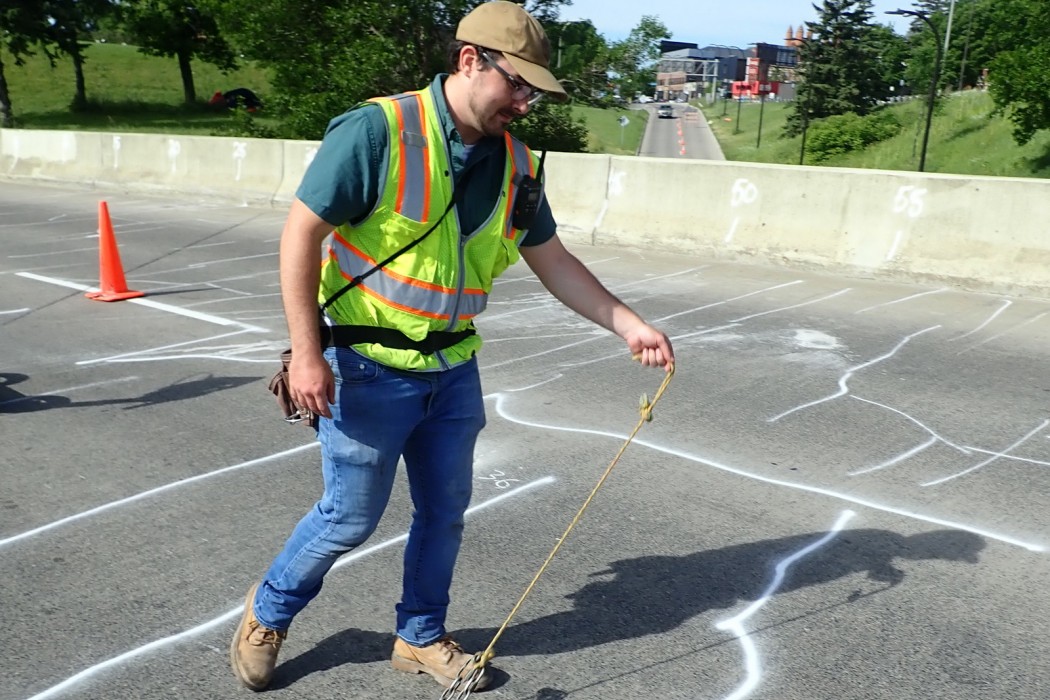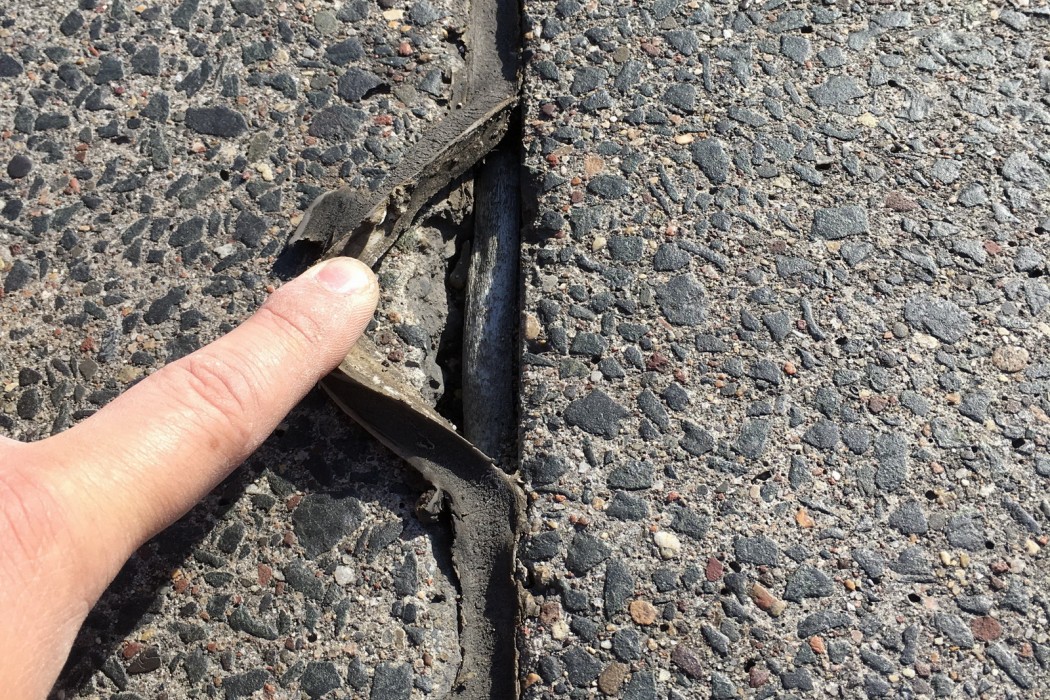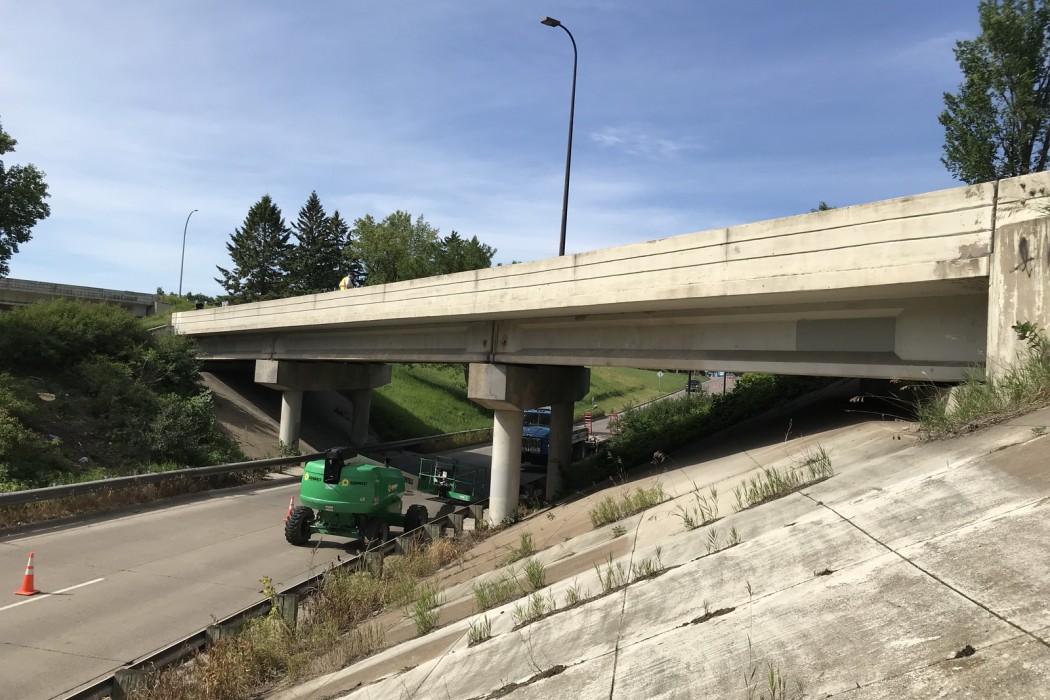WJE PROJECTS
Minnesota Bridge No. 27099

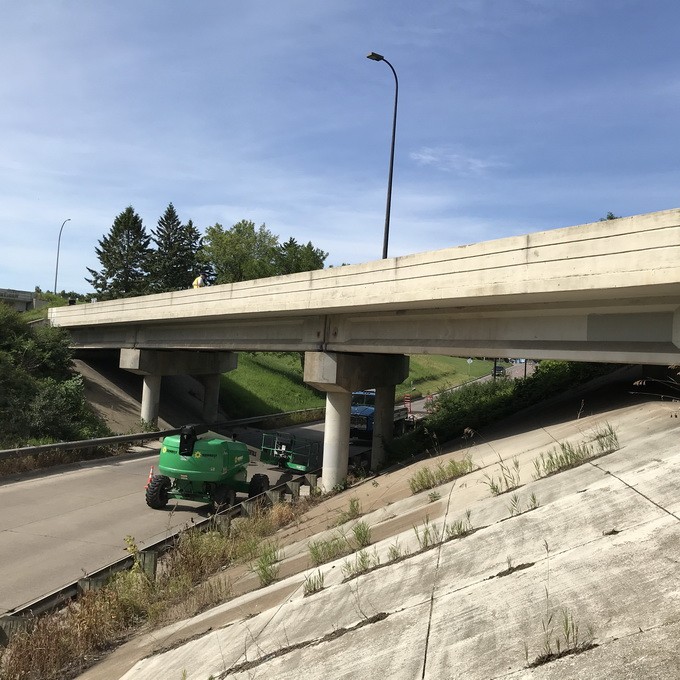
CLIENT |
City of Minneapolis Department of Public Works |
LOCATION |
Minneapolis, MN |
Condition Assessment and Rehabilitation Recommendations
In 2019, the client retained WJE to perform a targeted condition assessment of the bridge substructure (abutments and piers) to evaluate distress identified by the City during routine inspections. Following review of WJE’s report, in 2020 the City requested WJE perform a condition assessment and service life evaluation of the bridge deck and superstructure. The intent of these additional services was to consolidate findings from the substructure, superstructure, and deck assessment work to develop maintenance and rehabilitation strategies and estimated costs.
BACKGROUND
Minnesota Bridge No. 27099 carries Lyndale Avenue South over Hennepin Avenue in a downtown area of Minneapolis. The bridge was originally constructed in 1965 and has a total length of approximately 130 feet. There are three spans between the concrete abutments at each end of the bridge and two interior concrete bridge piers. Three precast, prestressed concrete I-girders support each span. The bridge was modified in 1989, including removal and replacement of the deck and edge railings, repairs to the abutments, and installation of a light pole attached to the west railing. Annual inspections by the City identified concrete distress that prompted WJE’s review.
SOLUTION
In 2019, WJE performed visual and sounding assessments, rebar cover surveys with ground penetrating radar (GPR), corrosion potential testing, and laboratory testing of concrete core samples for the concrete piers and abutments. WJE engineers found that the piers and abutments were in fair condition, but exhibited minor to moderate distress from chloride-induced corrosion of the steel reinforcement. Leakage through deck joints was identified as the likely cause of corrosion. The 2020 assessment included visual and sounding assessments, rebar cover surveys (GPR), overlay bond testing, and laboratory testing of concrete core samples for the bridge deck and superstructure. A service life evaluation of the bridge deck was also performed using WJE’s in-house modeling program (WJE CASLETM).
The WJE team found the bridge deck to be in good condition with limited distress, and estimated an additional fifty years of service life remained before damage would warrant rehabilitation of the deck. Two deck joint seals had failed, resulting in leakage as the primary cause of observed substructure and superstructure distress, including extensive corrosion damage to diaphragm beams and girder ends below these joints. This deterioration—not deck deterioration—will control the expected service life of the bridge. WJE provided the City with conceptual rehabilitation options that included conventional concrete repairs, joint seal repairs, and corrosion mitigation strategies. WJE also assisted the City with budgeting by providing estimated costs for proposed rehabilitation strategies.
RELATED INFORMATION
-
 Our knowledge of bridge performance is supported by technical expertise in structural... MORE >Services | Bridge Engineering
Our knowledge of bridge performance is supported by technical expertise in structural... MORE >Services | Bridge Engineering -
 Our professionals deliver practical repair and rehabilitation services that maximize the... MORE >Services | Repair and Rehabilitation
Our professionals deliver practical repair and rehabilitation services that maximize the... MORE >Services | Repair and Rehabilitation -
 We have pioneered the use of nondestructive evaluation methods—such as ground penetrating... MORE >Services | Nondestructive Evaluation
We have pioneered the use of nondestructive evaluation methods—such as ground penetrating... MORE >Services | Nondestructive Evaluation -
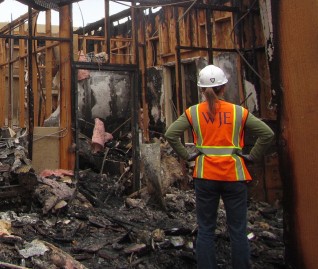 Thousands of clients have relied on us to accurately determine the cause and extent of damage... MORE >Services | Failure and Damage Investigation
Thousands of clients have relied on us to accurately determine the cause and extent of damage... MORE >Services | Failure and Damage Investigation



































